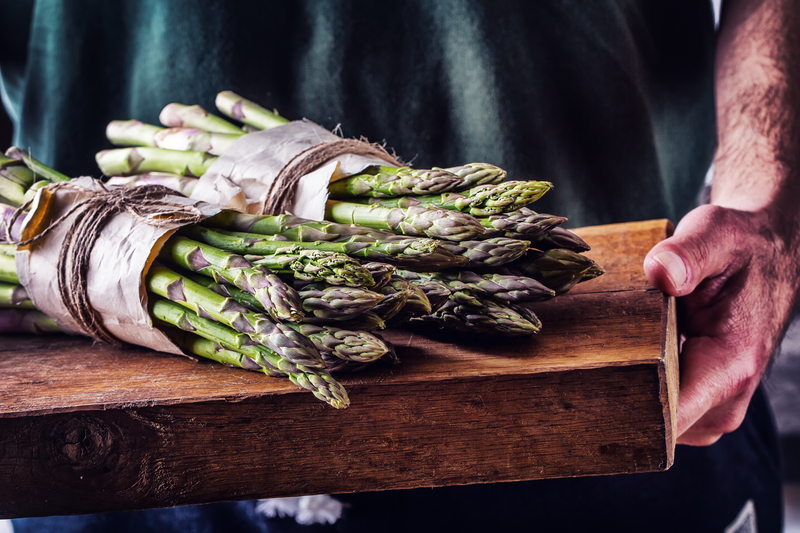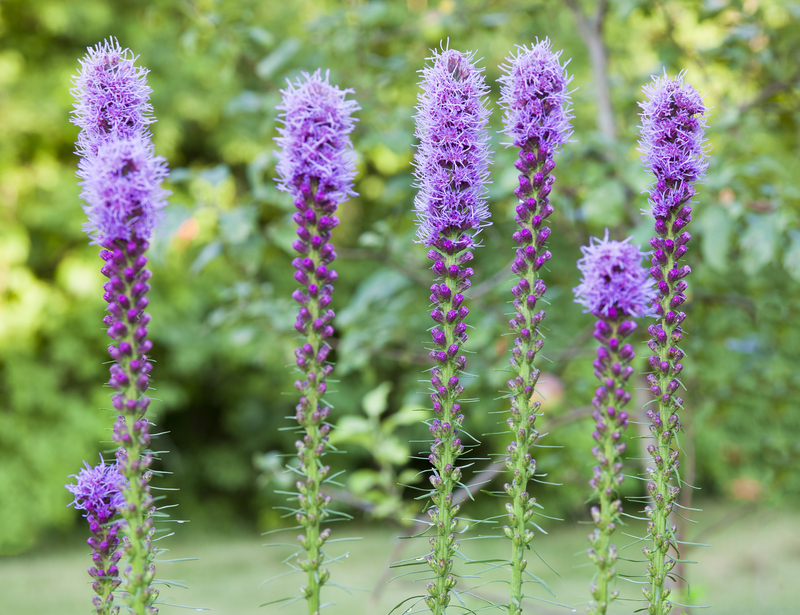Dive into the World of Ultimate Orchid Care
Posted on 07/09/2025
Dive into the World of Ultimate Orchid Care
Are you captivated by the exotic beauty of orchids but unsure how to nurture them successfully? Welcome to the comprehensive guide on ultimate orchid care! Whether you're a budding enthusiast or a seasoned grower, this article will provide everything you need to transform your orchid experience--from essential basics to advanced techniques. Let's embark on a vibrant journey through the world of orchids and discover how to make your plants thrive!

Understanding Orchids: An Introduction
Orchids are among the most diverse and fascinating flowering plants in the world. With over 25,000 species and more than 100,000 hybrids, they delight plant lovers with their delicate flowers, intriguing shapes, and captivating colors. Mastering orchid care starts with understanding the unique nature and requirements of these remarkable plants.
Main Types of Orchids for Home Care
- Phalaenopsis (Moth Orchid): The most popular and user-friendly for beginners.
- Dendrobium: Loved for prolific blooming and graceful canes.
- Cattleya: Celebrated for their spectacular, fragrant flowers.
- Oncidium: "Dancing Lady" orchids known for their profuse sprays of blooms.
- Vanda: Valued for vivid blooms and outstanding color diversity.
Essential Elements of Ultimate Orchid Care
To successfully grow orchids, you must pay attention to several crucial factors. Here are the core aspects that make up the foundation for orchid care excellence:
1. Lighting: Finding the Sweet Spot
Light is perhaps the most important parameter when it comes to caring for orchids. While different species have varied light needs, the following guidelines apply to most mainstream varieties like Phalaenopsis:
- Orchids prefer bright, indirect sunlight.
- Avoid harsh afternoon sun, which can burn leaves--opt for east or north-facing windows if possible.
- If natural light is limited, consider LED grow lights designed for houseplants.
- Leaves tell the story: dark green leaves indicate low light; yellowish-green leaves suggest optimal light exposure.
2. The Art of Watering Orchids
Orchids are sensitive to watering routines. Overwatering is the most common cause of demise. The secret to ultimate orchid watering is balance and routine:
- Water only when the top inch of the potting mix is dry.
- Typically, water once per week in winter and every 3-4 days in summer, depending on humidity and temperature.
- Avoid letting orchids sit in standing water, as this promotes root rot.
- Use room-temperature, filtered, or rainwater whenever possible.
- Consider the soak-and-drain method for the best results.
3. Humidity and Air Circulation: Orchids' Natural Habitat
Most orchids originate from tropical and subtropical regions, where humidity levels are high and air is in motion. Here's how to replicate their natural habitat at home:
- Maintain humidity at 40-60%. Use pebble trays, humidifiers, or frequent misting.
- Avoid direct misting of flowers to prevent fungal spots.
- Good air circulation is vital. Use fans or ensure rooms are well-ventilated.
- Remember, both too much and too little humidity can hinder orchid health.
4. Choosing the Right Potting Mix
Unlike many houseplants, orchids don't thrive in conventional soil. They require a specialized, fast-draining potting mix:
- Phalaenopsis orchids typically do well in bark or sphagnum moss mixtures.
- Dendrobium and Cattleya species prefer coarse bark, perlite, and charcoal.
- Choose clear plastic pots with drainage holes to monitor root health and avoid waterlogging.
- Repot every 1-2 years or if the mix decays and compacts.
5. Fertilizing for Ultimate Orchid Blooms
Orchids are moderate feeders but need regular nutrition to produce stunning blooms:
- Use a balanced orchid fertilizer, such as 20-20-20, diluted to half-strength.
- Fertilize every other week during the active growing season (spring and summer).
- Reduce feeding in fall and winter when growth slows.
- Occasionally flush the pot with clear water to remove salt buildup.
Advanced Orchid Care: Achieving Long-Term Success
Monitoring Orchid Health
For ultimate orchid care success, become a plant detective! Vigilantly observe your orchid's leaves, roots, and flowers:
- Healthy roots are plump and silver-green or white with green tips.
- Firm, upright leaves indicate vigor, while mushy or spotted leaves suggest problems.
- Sudden bud drop or shriveled flowers may result from temperature shock or improper watering.
Common Orchid Problems & Solutions
Even with the best care, issues can arise. Here's how to tackle some frequent challenges:
- Yellow leaves: Overwatering, old age, or too much sun.
- Root rot: Caused by soggy substrate; trim affected roots and repot immediately.
- Leaf spots: Often from fungal or bacterial infections; remove affected parts, improve air circulation.
- Pest infestations: Mealybugs, scale, and spider mites can be treated with neem oil or insecticidal soap.
Repotting Orchids: When and How
Repot orchids every 12-24 months, or when your plant shows one or more of the following signs:
- Potting medium breaks down and no longer drains well.
- Roots are crowded, growing out of the pot, or appear unhealthy.
- Water runs straight through the pot, indicating degradation of the medium.
To repot: Gently remove the plant, trim away any dead roots, and place the orchid into a slightly larger pot with fresh, damp orchid mix. Try to handle the roots minimally and water sparingly for the first week.
Orchid Blooming: Encouraging Re-blooming and Longevity
The Re-blooming Process
After the initial spectacular bloom, many beginners wonder if their orchid will ever flower again. The answer is a resounding yes--with the right orchid care routine.
- Cut back the flower spike just above a node once blooms fade (for Phalaenopsis).
- Move the orchid to a slightly cooler spot (60-65?F at night) for 2-4 weeks to encourage a new flower spike.
- Resume regular care once a new spike appears.
Extending the Life of Your Orchid Blooms
- Keep the orchid away from fruit bowls; ethylene gas from ripening fruit can prematurely age flowers.
- Ensure stable temperature and avoid drafts.
- Maintain optimal humidity levels and supply regular, moderate water and nutrition.
Specialized Orchid Varieties & Their Unique Needs
- Miniature orchids: Thrive in terrariums or glass domes due to higher humidity requirements.
- Vanda orchids: Prefer to be grown in baskets with roots exposed to the air--mist daily and water thoroughly a few times a week.
- Cymbidium orchids: Need cooler winter nights for successful blooming.
Pro Tips for the Ultimate Orchid Care Experience
- Patience is key: Orchids can take time to adapt to new environments--give them consistency.
- Use sharp sterile tools for trimming leaves, spikes, or roots to prevent infections.
- Label your plants, especially if you grow multiple varieties, so you can cater to each orchid's specific requirements.
- Join local orchid clubs or online forums for continual learning and troubleshooting.
- Document your journey: Track your watering and blooming schedule to identify what works best for each plant.

Frequently Asked Questions About Orchid Care
Should I mist my orchids daily?
Daily light misting can help raise humidity, especially in dry environments. However, avoid direct misting of flowers and the center of the plant to prevent rot and fungal issues. Use a humidity tray for more stable moisture.
Can I grow orchids outdoors?
In mild climates, many orchids enjoy time outdoors from late spring to early autumn. Place them in a shady, sheltered spot away from direct midday sun and check them regularly for pests.
How do I get my orchid to bloom again?
After the resting phase, provide a slight drop in nighttime temperature and ensure adequate light. Most importantly, keep following a consistent orchid care and feeding regime to promote flowering.
Conclusion: Embracing the Art of Orchid Care
Ultimate orchid care is an exciting and rewarding journey that combines art and science. By understanding your orchid's specific needs--from correct lighting and watering to providing the best possible potting mix and humidity--you'll unlock the mysteries to lush, long-lasting blooms and vibrant growth.
Remember, each orchid is unique, and with patience, practice, and a bit of observation, you, too, can master the world of orchid care! Dive in, experiment, and soon your home will be graced with the breathtaking beauty of thriving orchids.
Ready to Grow?
Why not start your own orchid care adventure today? Armed with the insights from this guide, you're well on your way to cultivating thriving, exquisite orchids that will captivate and inspire for years to come.



